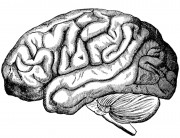It is not uncommon for people to refer to their idiosyncratic tendencies as “my OCD”. Youtube comedians Rhett and Link even wrote a hilarious song describing a person’s preference for things to be parallel and clean.
While the song and video are funny, they don’t begin to capture the anguish experienced by individuals who actually suffer from Obsessive Compulsive Disorder. If you are wondering what it is like, imagine that when things are the way you like them, such as the bed being made just right, or the doors closed and locked, everything is at peace in your mind. However, when a corner of the sheet isn’t flattened out properly, a high-pitched screeching noise pierces your eardrum, causing blinding pain. If the only way to remove the offending noise was to flatten the sheet, it stands to reason that you would be highly motivated to do so.
While this isn’t literally what happens in the OCD brain, it is the metaphorical equivalent. One man, suffering from Tourette’s Syndrome, which shares many commonalities with OCD, stated that the compulsion to yell out inappropriate comments or make twitching movements with his shoulders was as strong as the desperation to breathe if someone was holding his head underwater. So what causes this condition?
There are a few possible paths to OCD, some neurological and some learned. The most common cause that I have come across is what I refer to as ‘displaced anxiety’. This means that on an unconscious or subconscious level, the brain is afraid of something but due to our restricted access to the source of the fear, we use something else as the scapegoat. For example, if I am afraid on a deeper level of losing the people I love, the roots of that anxiety may be very old and therefore unconscious, inaccessible to recollection. However, despite not being aware of the origins of the anxiety, I still have the conscious experience of stress. Because we don’t like free-floating anxiety, we assign those anxious feelings to something in our conscious awareness, like germs, locking the doors, making sure things are straight. The brain tells us that as long as we are on top of those things, then we are safe. However, we know that these activities are just the scapegoat for the anxiety because although giving in to the compulsion momentarily eases the obsession and the anxiety, it is only for the moment. The anxiety returns time and time again. If you had a toothache and the dentist filled the wrong tooth, the pain would persist. Hopefully you wouldn’t keep going back to have the same tooth filled over and over again, but you would identify which tooth is actually the one that needs the filling and get it taken care of. And then find a new dentist.
Displaced anxiety is the same thing. We continue to attribute the anxiety to something that is not actually causing it. Therefore, when we address that issue, it doesn’t actually reduce the anxiety. However, unlike the tooth, we often continue to address the same issue, even when time and time again, the result is the same. Instead, we would do well to uncover the real source of the fear and deal with it directly. I suggest, as a first line of inquiry, asking the question, what am I really worried about? Dr. Jeffrey Schwartz, a research psychiatrist at UCLA, has developed a four-step approach to dealing with OCD problems. Check them out and let me know what you think.
The Four Steps
Step 1: Relabel
Acknowledge the obsession for what it is: just an obsession or an urge, not as a real thing, a real emergency, a real fear, or a real threat
Step 2: Reattribute
Acknowledge the true source of this obsession or urge: Your own brain. It is the result of wiring in the brain, not any kind of reality.
Step 3: Refocus
Shifting focus to something else, something that requires active attention. This step is the hardest. You will probably have to repeat steps 1 and 2 as you work on this step. Use the 15 minute rule: put off acting on the obsession or urge for a designated period of time, such as 15 minutes.
Step 4: Revalue
See the thoughts and behaviors for what they really are; they are only counterfeit threats. You’re not the only person who experiences this. It doesn’t mean you’re crazy or stupid. Ultimately and eventually, you can control them, not the other way around.
I hope this very brief discussion of OCD has at least piqued your interest to learn more. If so, feel free to contact me.



















































[…] Dealing with Obsessive Compulsive Disorder – by Ted Leavitt […]
The four step approach to dealing with OCD is actually pretty helpful! Thanks for sharing!